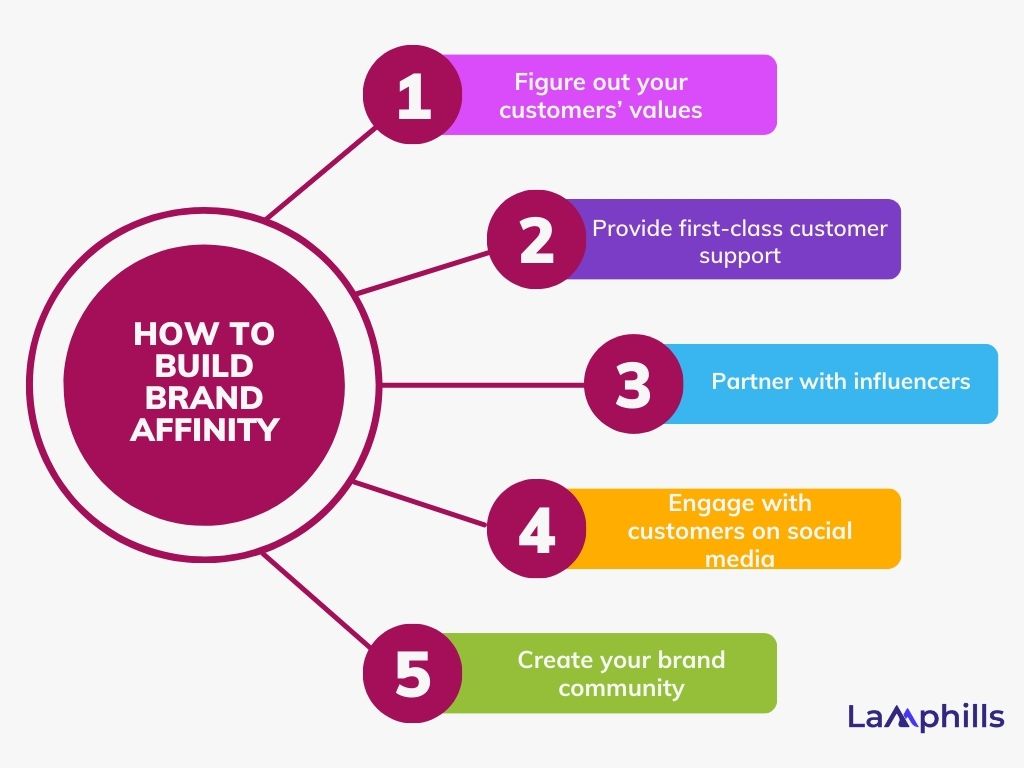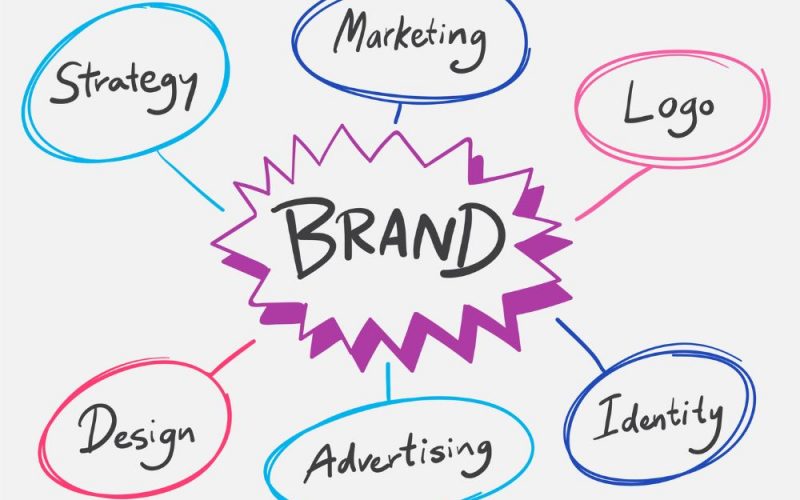What’s your favorite shoe brand? Well, mine is Nike, and this is mainly because most of my favorite athletes are brand ambassadors. This also means that I try to pattern certain aspects of my life in line with these athletes and the brand itself as a whole. That is the basis of brand affinity.
Key Points
- Brand affinity refers to the emotional connection between customers and companies.
- When customers feel a company values the same ideals as them, they may become more likely to make purchases from the company for a long time.
- However, brand affinity can differ for each customer, since it relies on their beliefs and how they feel about the brand.
- Before you can build brand affinity, you first need to understand how your target audience currently perceives and interacts with your brand.
- To develop brand affinity, companies should build brand awareness and loyalty.
Understanding the Concept of Brand Affinity
Brand affinity is a belief that a company shares the same values or principles as its customers. It refers to the emotional connection between customers and companies.
When people share the values of a brand, they tend to buy their products and recommend them to others. This means that the entire buying journey becomes highly influenced by that emotional bond. It can also reflect any other aspects of the company that help customers build a strong emotional connection.
When customers feel a company values the same ideals as them, they may become more likely to make purchases from the company for a long time. However, brand affinity can differ for each customer, since it relies on their beliefs and how they feel about the brand.
What Are The Benefits of Brand Affinity?
The benefits of the brand affinity concept are explicit, starting with the fact that it’s easier and more efficient to build customer loyalty. After all, they feel identified with the ideas and values that your brand conveys.
In other words, they become more likely to return again and again, creating a customer base that really cares about your company. Besides, it’s another mechanism of competitive differentiation.
The emotional factor impacts the decision process, and building this relationship optimizes all this effort. Therefore, priority is one more advantage of applying brand affinity to your company’s business model.
Below are more benefits of brand affinity:
#1. Growing a Customer Base
When consumers like a brand, they may be more likely to refer others to the business. These customer referrals are often very effective in growing the customer base because many people trust other people’s recommendations or friends’ opinions more than advertisements.
Referred customers who enjoy the company may also refer other people and so on, leading to customer base growth. This can be even more effective if customers who share a company’s values recommend it to others with those same ideals. Social media posts and online reviews are great examples of how customer referrals can travel quickly.
#2. Raising Brand Awareness
Brand awareness is an important aspect of marketing and making sales since it introduces customers to a company’s offerings. Brand affinity may raise brand awareness because customers may choose to discuss a company they enjoy with others.
This is useful because customers can contribute to the company’s marketing when they share their feelings online or with friends.
#3. Increasing Sales
Brand affinity can lead to an increase in sales. When customers feel that the business shares their values, they may have more confidence in making purchases. Loyal customers can continue to buy from a company they trust, and may also make even bigger purchases in the future.
Since brand affinity can help increase a company’s customer base, this can also mean more sales for the company.
#4. Fostering Excellent Customer Service
Excellent customer service can be a by-product of brand affinity because businesses often put more effort into providing quality service and assistance for their customers when trying to increase brand affinity. Businesses may develop training programs for customer service representatives so that they can provide consistent service and have all the tools they require to help their customers.
This can be especially true if a company and its customers highly value service.
Brand affinity can also improve customer service by motivating a business to connect with the customer and develop products and services that are more appealing. For example, a business can create more personal interactions with customers to make them feel important and better serve them, whether it be in person, over the phone, or via online services.
This shows that the company is considering how to further its dedication to service and improve its customers’ experiences.
How To Build Brand Affinity
You need to carry out complex work that will cover different business spheres. This way, you’ll take an in-depth look at your brand to improve every aspect. Below, I will share several important tips.

#1. Figure Out Your Customers’ Values
To build an emotional connection with clients, you need to have a clear picture of their core values, needs, wants, and preferences. This will help you be on the same page. Also, you can find out what they consider your top value. Conduct a survey and ask clients directly. This way, you’ll see whether your audience realizes your values and shares them.
If they understand them differently, you can change your direction accordingly.
#2. Provide First-Class Customer Support
Customers are ready to pay more for 24/7 support in their language, fast response time, personalized offers, and guys who treat them as friends rather than attacking with tons of prepared links. Your support team is the face of your company which makes clients judge it by relying on communicating with it.
Make sure your clients feel no anger or disappointment when contacting your support team to ask for a refund or exchange of products. Be helpful and friendly.
#3. Partner With Influencers
These people can not only enhance your brand promotion but also provide you with clients who share your values. Influencers are not only well-known celebrities. You can start by finding a micro-influencer who may like your product or is already your client. Offer them mutually beneficial cooperation and ask them to promote your brand focusing on its core values.
This way, you’ll acquire qualified and interested leads who have enough social proof to buy from you.
#4. Engage With Customers On Social Media
Social networks’ power is immense and limited only by your creativity. People spend hours every day on Facebook and Instagram, so why should you miss this opportunity?
Find out what they think about your company with the help of social media listening tools, check out your brand mentions, and act on them. Encourage people to comment on your account and be proactive in answering them to show that you care. Give them thanks for positive mentions and contact with those who left negative comments — this is your chance to change their experience for the better.
Provide customer service via chatbots. Share educational content, photos and videos, user-generated content, and reviews on social media. This will help you attract new leads as well.
#5. Create Your Brand Community
People like to belong to something huge because it makes them feel valuable and find like-minded people. Their common interest in your brand and the values you share. So, it’s your chance to build trustful and long-lasting relationships.
Now that you know how to build brand affinity, it’s time to find out how to measure it.
How to Measure Brand Affinity
Before you can build brand affinity, you first need to understand how your target audience currently perceives and interacts with your brand. That way, you can establish clear targets and benchmarks for measuring your progress.
The easiest way to do this is by using tools to measure your current level of brand affinity. It’s also important to measure the level of affinity between your brand, your chosen influencers, and their audiences. That way, you can be sure that you are targeting the right audience with your campaigns.
Measuring brand affinity
Importance of Measuring Brand Affinity
There are many reasons why it is important to measure brand affinity. Here are a few:
- To track your brand’s performance over time –. Brand affinity is a leading indicator of future sales and revenue. By tracking your brand affinity over time, you can see how your marketing and branding efforts are impacting customer perception.
- To identify areas for improvement – If your brand affinity is low, it can help you identify the areas where you need to improve your brand. This could include your product or service offering, your marketing messages, or your customer service.
- To make better marketing decisions – When you know how customers feel about your brand, you can make better marketing decisions. For example, you can target your marketing messages to the people who are most likely to be interested in your brand, or you can develop new products or services that appeal to your target audience.
- To build a strong brand – A strong brand is well-known, liked, and trusted by customers. By measuring your brand affinity, you can track your progress toward building a strong brand.
Measuring brand affinity is an important part of any successful marketing strategy. By tracking your brand affinity over time, you can identify areas for improvement and make better marketing decisions. This will help you build a strong brand that will attract and retain customers for years to come.
Brand Affinity vs Brand Loyalty
The major factor that differentiates these terms is the driving force that makes people choose this or that brand. Brand loyalty doesn’t require companies to build an emotional connection with their customers. People choose a brand wisely. They research competitors, compare prices and features, consider refund and exchange policies, and look for reviews and testimonials.
So, this is a rational decision that makes customers buy again.
Brand affinity, however, is all about feelings and emotions. These are the driving force that makes people choose this or that brand. Fans of Apple explain their affinity to the company the same way. They share the same values as Apple does and enjoy the feelings they have when using their products. This emotional connection is rather strong and provides additional reasons to remain this brand’s client.
To develop brand affinity, companies should build brand awareness and loyalty. It means that this is a long-lasting process that includes working on both affinity and loyalty.
Brand Affinity vs. Brand Equity
Brand equity is the added value a brand gives to a product over a competing alternative.
For example, I was recently shopping for laundry detergent, and side-by-side on the shelf is a generic laundry detergent and Tide. Now, I have some tough stains waiting to be cleaned at home, and even though the generic detergent says it works on stains and is less expensive, of course, I reach for Tide. I put my trust in it over the generic choice for no reason other than my belief in the brand.
Brand affinity is about the positive relationship between the customer and the brand. Brand equity, on the other hand, encompasses the whole brand, justifies its value, and is measured based on perceived quality, associations, loyalty, and awareness. You need brand equity to achieve brand loyalty and affinity.
Why is Brand Affinity Important?
Brand affinity belongs to the most essential marketing metrics such as brand preference and loyalty. Affinity lets companies build emotional connections with their clients which is the cherry on the cake. Companies can succeed in this task by communicating their core values during every interaction with a customer.
Hence, they will associate these feelings and emotions with that particular brand. As we know, emotions drive people’s motives and actions. So, customers will consider this brand the best choice, and this will result in higher sales volume.
Besides, clients who feel an affinity to your brand have increased lifetime value which impacts your revenue positively.
Recommended Articles
- Brand Advertising: Elevating Your Brand Awareness
- What Does Evergreen Mean In Business? Timeless Tactics for Lasting Growth
- How To Add an Admin To a Facebook Page In 2024





